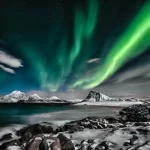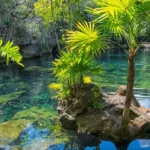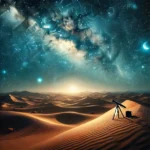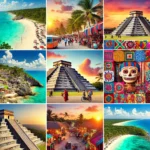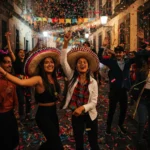Banff National Park, located in the heart of the Canadian Rockies, stands as a beacon of natural beauty and outdoor adventure. This majestic park, Canada’s first national park and a UNESCO World Heritage site, attracts millions of visitors each year, drawn by its stunning landscapes, diverse wildlife, and a plethora of activities suitable for all ages and interests.
Scenic Drives and Overlooks Banff National Park
One of the most breathtaking aspects of Banff National Park is its scenic drives, particularly the Icefields Parkway. This spectacular route stretches 232 kilometers (144 miles) through the heart of the Rocky Mountains, offering an ever-changing landscape of towering peaks, vast icefields, and turquoise lakes. Driving along this route, visitors are treated to some of the most dramatic mountain scenery on the planet. Key stops along the way include Bow Lake, with its serene waters reflecting the surrounding peaks, and Peyto Lake, famous for its stunning bright blue color, a result of glacial rock flour. These locations provide unparalleled opportunities for photography and wildlife viewing, with frequent sightings of bears, elk, and other mountain fauna.
Hiking Trails

For those keen on exploring the park’s natural beauty up close, Banff offers an extensive network of hiking trails. Ranging from easy walks to challenging backcountry treks, these trails provide access to some of the park’s most spectacular scenery. A popular choice for families is the Johnston Canyon trail, which winds through a deep limestone canyon to reveal stunning waterfalls. For the more adventurous, the hike to Sentinel Pass through Larch Valley offers one of the most breathtaking views in the Rockies, overlooking the famous Ten Peaks.
Lake Louise and Moraine Lake
Lake Louise and Moraine Lake, two of the most iconic destinations in Banff, are renowned for their vivid turquoise waters and stunning mountain backdrops. These glacially-fed lakes are a must-visit for any tourist. Lake Louise, with the grand Fairmont Chateau Lake Louise on its shore, offers a range of activities from canoeing in summer to ice skating in winter. Moraine Lake, set in the Valley of the Ten Peaks, provides a more secluded experience. The area around both lakes is crisscrossed with trails, offering some of the best hiking in the park, including the famous Plain of Six Glaciers and the Moraine Lake Rockpile Trail.
Wildlife Viewing
Banff National Park is also a prime location for wildlife viewing. The park is home to a diverse array of wildlife, including grizzly and black bears, elk, wolves, and many bird species. The Bow Valley Parkway and the areas around Lake Minnewanka are particularly good for spotting wildlife, especially during the quieter hours of dawn and dusk. While encountering these wild animals can be a thrilling experience, it is essential to maintain a safe distance and respect their natural habitat.
Banff Townsite

Nestled in the heart of the park, the town of Banff offers a charming base for exploring the surrounding wilderness. This picturesque town is lined with boutique shops, fine dining restaurants, and art galleries. The Banff Gondola provides a spectacular view of the town and its mountainous backdrop. Cultural attractions like the Whyte Museum of the Canadian Rockies and the Banff Centre for Arts and Creativity add to the town’s appeal, offering insights into the region’s history and culture.
Hot Springs
After a day of hiking or skiing, visitors can relax in the Banff Upper Hot Springs. These natural mineral springs, located on Sulphur Mountain, provide a soothing and warm retreat with stunning views of the surrounding mountains. The hot springs are a part of the national park’s history, having drawn visitors to the area since the 19th century.
Winter Sports
In winter, Banff National Park transforms into a snowy paradise, attracting skiers and snowboarders from around the world. With three major ski resorts – Mount Norquay, Sunshine Village, and Lake Louise Ski Resort – the park offers a diverse range of terrain for all skill levels. Beyond skiing and snowboarding, winter in Banff includes opportunities for ice skating, snowshoeing, and sleigh rides, making it a premier destination for winter sports enthusiasts.
Cultural Experiences
Banff is not just about outdoor adventures; it’s also a center for arts and culture. The Banff Centre for Arts and Creativity is a hub for the arts, hosting a variety of performances, exhibitions, and artist residencies. Visitors can also explore the park’s history and natural wonders at the Banff Park Museum, a national historic site. The museum showcases an extensive collection of natural history specimens and exhibits on the park’s diverse flora and fauna.
Photography and Art

For photography enthusiasts, Banff offers endless opportunities for capturing stunning landscapes. The park’s diverse scenery, from its majestic mountains to its serene lakes and abundant wildlife, provides a plethora of subjects for both amateur and professional photographers. Art lovers will also appreciate the numerous galleries in Banff and Lake Louise, showcasing works by local and indigenous artists.
Guided Tours
For those looking to deepen their understanding of Banff National Park, guided tours offer insights into its ecology, geology, and history. Options range from wildlife tours and historical walks to more adventurous activities like horseback riding and helicopter tours. These guided experiences provide a richer perspective on the park and its significance as a protected natural area.
FAQs
- What is the best time to visit Banff National Park? The best time to visit depends on what activities you’re interested in. Summer (June to August) is ideal for hiking and wildlife viewing, while winter (December to March) is perfect for skiing and snowboarding.
- Do I need a park pass to enter Banff National Park? Yes, all visitors are required to purchase a park pass. These can be obtained at the park gates, visitor centers, or online.
- Are there any accommodations within the park? Banff offers a range of accommodations, from luxurious hotels to rustic cabins and campgrounds.
- Is it safe to hike in bear country? Hiking in bear country is safe as long as you take precautions, such as carrying bear spray, making noise, and hiking in groups.
- Can I see the Northern Lights in Banff? While Banff is not a prime location for Northern Lights viewing, it’s possible to see them during strong solar activity, especially in the winter months.


